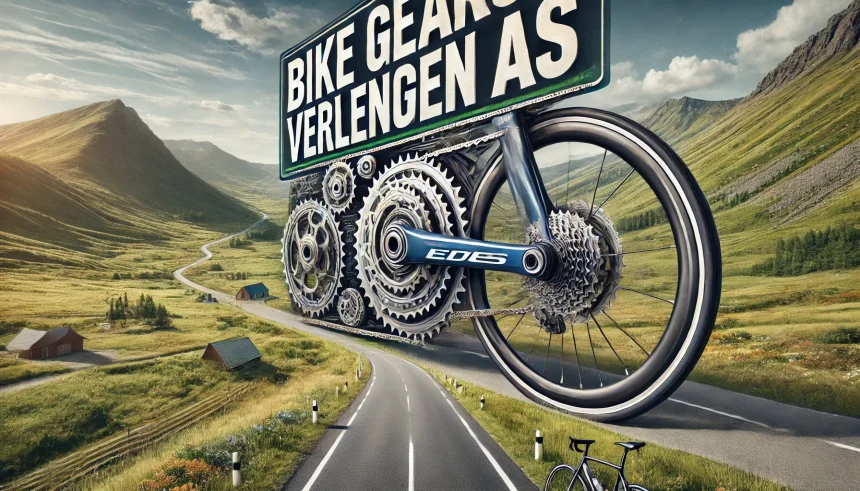Bike gears verlengen as an upgrade can help improve cycling efficiency, whether you need higher speed or easier pedaling on steep inclines. Many cyclists consider extending their gear range to match their riding style and terrain.
Extending bike gears means adjusting the front chainring or rear cassette to change the gear ratio. This allows riders to pedal more efficiently, reduce strain, and optimize performance.
For those who ride on flat terrain, extending gears can help achieve faster speeds with less pedaling effort. On the other hand, riders tackling steep hills may benefit from easier gears to maintain a steady cadence.
Understanding how gears work and how to modify them can significantly improve your cycling experience. Proper planning ensures a smooth transition to a new gear setup.
Understanding Bike Gearing
Bike gears control how much effort is needed to pedal. The gear system includes a front chainring, a rear cassette, and a derailleur that moves the chain between gears. These components work together to adjust resistance when riding.
A larger front chainring or a smaller rear cog results in a harder gear, requiring more force to pedal but increasing speed. A smaller front chainring or a larger rear cog creates an easier gear, making pedaling effortless but reducing speed.
Gear ratios determine how much distance the bike moves with each pedal stroke. A higher gear ratio means more travel per rotation, which is useful for speed. A lower ratio provides better control on steep terrain.
Some bikes use single-speed gearing, while others have multiple gears. Multi-gear bikes allow riders to shift gears depending on the road conditions and personal preference.
Why Extend Bike Gears?
Bike gears verlengen as a modification is useful for different cycling needs. Some riders want more speed on flat roads, while others need better climbing ability.
For road cyclists, higher gears help maintain speed without excessive pedaling. Riders can cover long distances efficiently, making their ride smoother and faster.
Mountain bikers often extend their lower gear range for easier climbing. More teeth on the largest cog reduce the effort required to ascend steep slopes.
- Better Cadence Control – Adjusting gears helps maintain an optimal pedaling rhythm, preventing fatigue.
- Increased Comfort – Riders can adjust gear ratios to reduce knee strain and improve endurance.
- Improved Efficiency – Matching gears to terrain ensures better energy use, especially on long rides.
Extending gears also helps cyclists adapt to different riding conditions. A balanced setup improves overall performance and makes riding more enjoyable.
Methods to Extend Bike Gears
Changing the Front Chainring
Upgrading the chainring is a simple way to modify gear range. A larger chainring increases speed but requires more pedaling force. A smaller chainring makes pedaling easier but reduces top speed.
Chainrings come in different sizes, typically ranging from 30T to 53T. Road cyclists often use larger chainrings, while mountain bikers prefer smaller ones for easier climbing.
Replacing the Rear Cassette
A rear cassette swap is another effective method. A cassette with a larger biggest cog makes climbing easier, while a smaller smallest cog helps with speed.
Not all cassettes are compatible with existing derailleurs. Before upgrading, ensure that the derailleur can handle the new gear range without issues.
Upgrading to a Wide-Range Cassette
Wide-range cassettes offer more flexibility for different terrains. Riders who need both high-speed gears and easy climbing gears benefit from a broader range.
A standard road cassette may have an 11-28T range, while a wide-range cassette can go up to 11-34T or more. This helps cyclists handle varied riding conditions with ease.
Considerations Before Extending Gears
Before making modifications, check the compatibility of your bike’s drivetrain. Not all derailleurs and chainrings work with every cassette size.
The length of the chain must also be adjusted after changing gears. A longer chain is needed for a bigger cassette, while a shorter chain may be required for smaller gears.
- Shifting Performance – Extending gears can affect how smoothly the bike shifts between gears. Proper adjustments ensure smooth transitions.
- Derailleur Limitations – Some derailleurs have a maximum capacity and cannot support large cassettes. Upgrading to a long-cage derailleur may be necessary.
- Cost vs. Benefit – High-quality components can be expensive. Consider whether the investment is worth the performance improvement.
Testing different gear setups before finalizing changes helps determine the best configuration for your riding style.
Tools and Steps for Gear Modification
Upgrading bike gears requires basic tools such as a chain breaker, cassette removal tool, and Allen keys. These tools help in safely removing and installing new components.
Steps for Changing the Chainring
- Remove the crankset using an Allen key.
- Unscrew the old chainring and replace it with the new one.
- Reattach the crankset and tighten all bolts securely.
Steps for Installing a New Cassette
- Use a cassette removal tool to take off the old cassette.
- Place the new cassette onto the freehub, ensuring proper alignment.
- Secure it tightly and check for any shifting issues.
After modifications, fine-tuning the derailleur ensures smooth gear transitions. A professional bike mechanic can help with adjustments if needed.
Common Mistakes to Avoid
Bike gears verlengen as an upgrade requires careful planning to avoid mechanical issues. Choosing the wrong components can lead to poor shifting performance.
One common mistake is overstretching the derailleur. If the derailleur isn’t designed for larger cassettes, it may struggle to shift properly, leading to chain skipping or misalignment.
Another issue is ignoring chain length. An incorrectly sized chain can cause tension problems and wear out components faster. Always measure and adjust the chain when changing gears.
- Cross-Chaining – Using extreme gear combinations (e.g., biggest front chainring with biggest rear cog) can cause excessive wear on the drivetrain.
- Skipping Proper Adjustments – After extending gears, derailleur alignment and tension must be checked to ensure smooth shifting.
- Forgetting Maintenance – New components require regular lubrication and cleaning to function properly.
Avoiding these mistakes ensures that the gear modification works efficiently and lasts longer.
Maintenance Tips After Extending Gears
After modifying gears, regular maintenance is essential for long-term performance. Keeping the drivetrain clean and well-lubricated prevents wear and tear.
Checking for chain wear is important, as an overstretched chain can damage the cassette and chainring. Replacing the chain on time ensures smooth shifting.
- Inspect Derailleur Alignment – Misaligned derailleurs can cause poor shifting and chain drops. Adjusting the limit screws prevents these issues.
- Lubricate Moving Parts – Applying chain lube regularly reduces friction and improves efficiency.
- Monitor Cable Tension – Proper cable tension helps in precise gear shifting, preventing delays.
Routine tune-ups keep the extended gear setup in top condition, ensuring a smooth and enjoyable ride.
Conclusion
Extending bike gears can enhance riding efficiency, whether for speed or easier climbing. Adjusting the front chainring or rear cassette allows cyclists to customize their gear ratio.
Bike gears verlengen as a modification must be done carefully, considering derailleur compatibility, chain length, and shifting performance. Proper installation and adjustments are key to achieving smooth transitions.
Avoiding common mistakes like cross-chaining and skipping maintenance helps maintain the new gear setup for long-term use. Regular lubrication and checks ensure optimal performance.
With the right modifications, extended gears improve riding comfort, efficiency, and overall cycling experience. Testing different configurations ensures the best setup for personal riding needs.
FAQs
What does “bike gears verlengen as” mean?
It refers to extending the gear range by modifying the front chainring or rear cassette for better speed or climbing efficiency.
Can I extend my bike gears without changing the derailleur?
It depends on the gear range; small changes may work, but larger cassettes usually require a long-cage derailleur.
Does extending bike gears make cycling easier?
Yes, it allows better control over pedaling effort, making steep climbs easier and high-speed riding more efficient.
What’s the easiest way to extend bike gears?
Replacing the rear cassette with a wide-range one is the simplest and most effective method.
How do I know if my bike can handle extended gears?
Check derailleur capacity, chain length compatibility, and frame clearance before upgrading.













